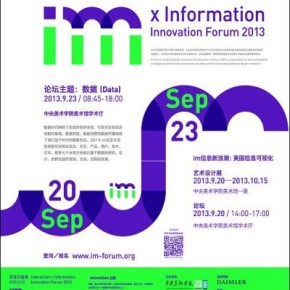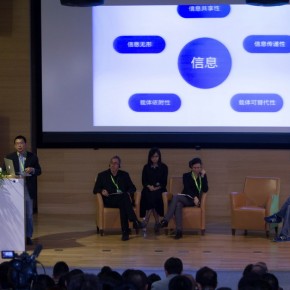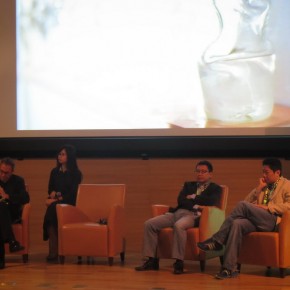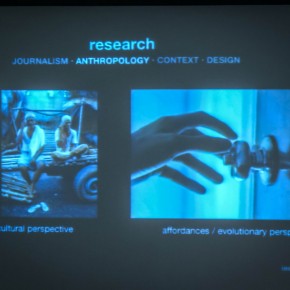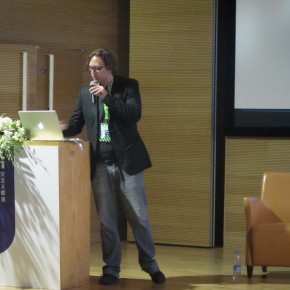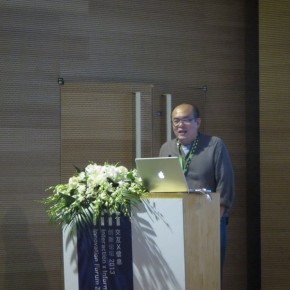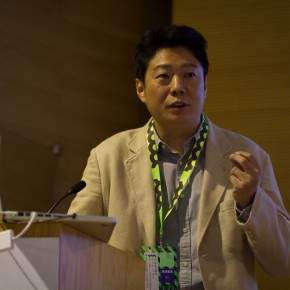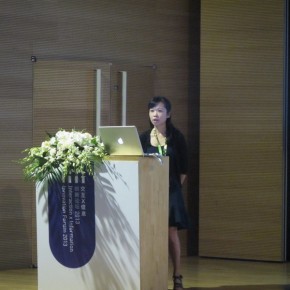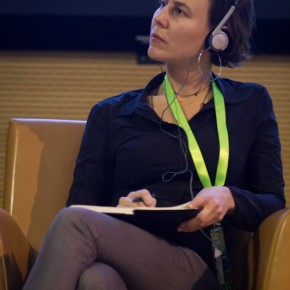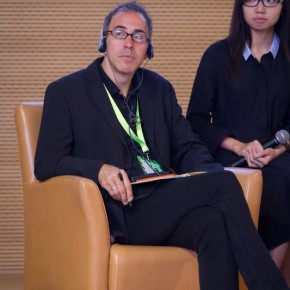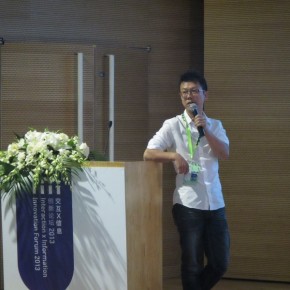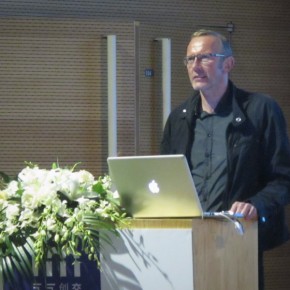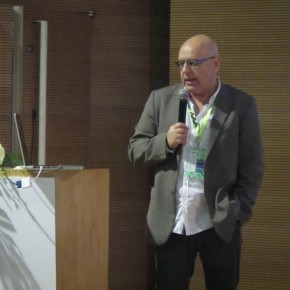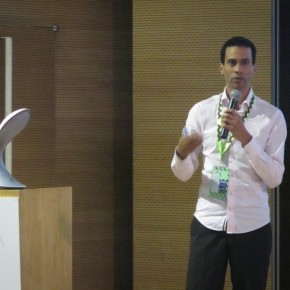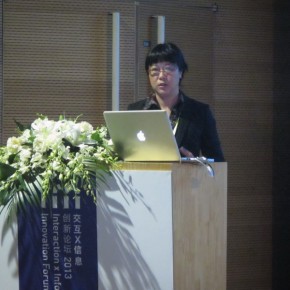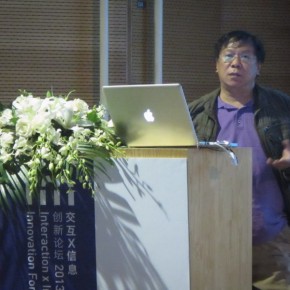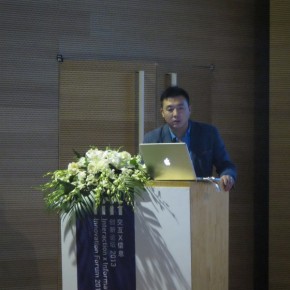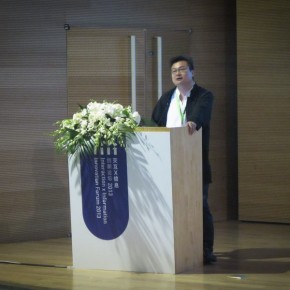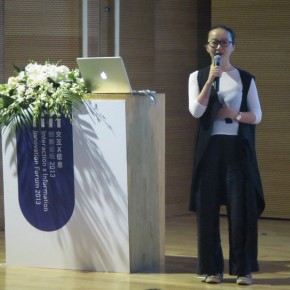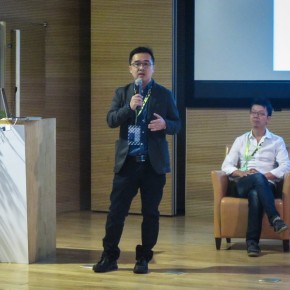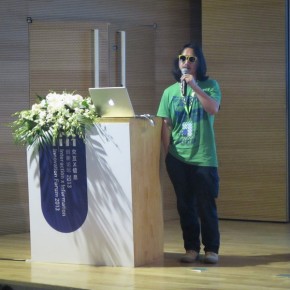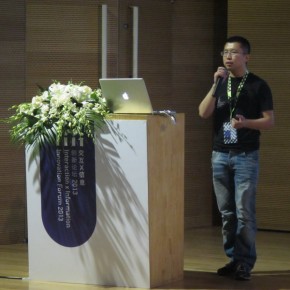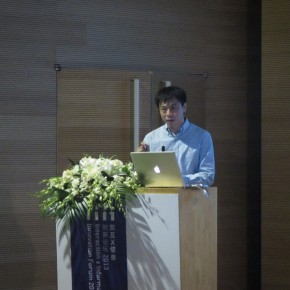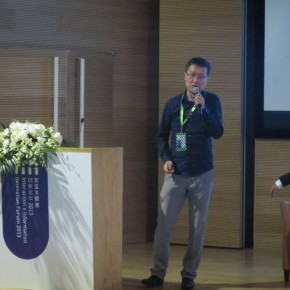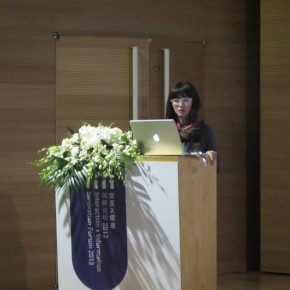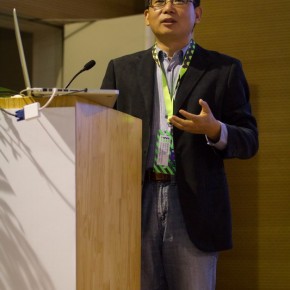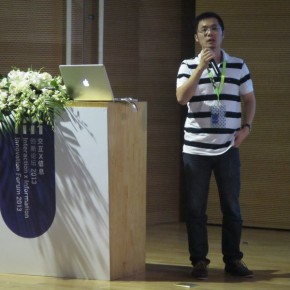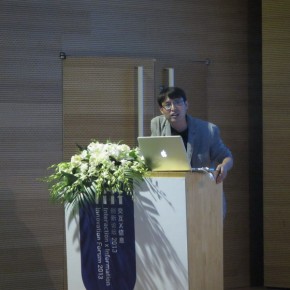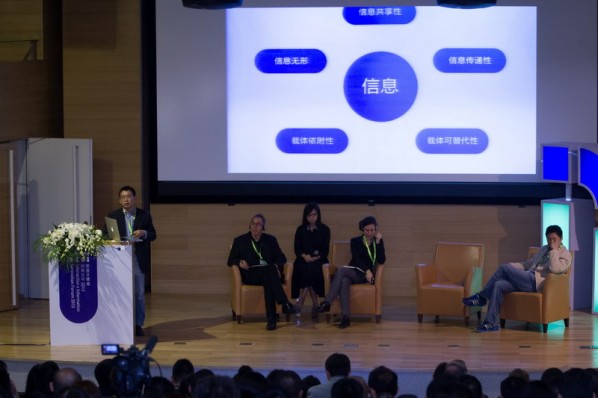
In the morning there were three sections: Information, Interaction and Product, which focused on the professional fields of “information”, “technology”, “software”, etc. Information section: Kevin Walker, Director of the Department of Information Experience, Royal Academy of Art, UK, Karin von Ompteda, leader of the Workshop for Information Design at the Royal Academy of Art, UK, Zhan Binghong, Dean of the School of Art and Design, Beijing Institute of Fashion Technology, Guo Yu, founder of Jiayi.com, interaction section: Professor Michael Bielicky, from the Department of Digital Media Art, Carr University of Art and Design in Germany, Philip Ross, Professor of the Eindhoven University of Technology, CEO of Fonckel, Zhang Wenxin, founder of Ark Design, Tang Mu, Director of User’s Experience at Xiaomi Technology; product section: Qiu Fengshun, founder of Ideadao, Xiao Juntao, founder of I health I health, Li Fenglang, Director of Lenovo Innovation Design Center, Jia Wei, founder of LKK. Attendees had a communication and discussion on the interaction information innovation, manufacturing data, consuming data and disseminating and constructing data, etc. At 13:30, there were four sections including: Technology, Users, Art, and Education. Compared with the professional discussion sections in the morning, it covered the information technology, and how to further art and education.
Technology Section
Teacher Chen Weiping presided over the section, Xue Wei, Senior Engineer of R & D Department for Benz China at Daimler Greater China Ltd., Zhao Yong, founder of Deep Glint, Xia Peng, Director of Technical Consultant of Microsoft, David Li, founder of New Workshop. Xia Peng initially talked about the four dimensions of big data: number, type, speed and reliability. Big data could collect gene, case investigation could be optimized by big data in the course of the judicial investigation, while visual data could qualitatively and quantitatively answer the special questions. Zhao Yong introduced that often advanced three-dimensional image processing and pattern recognition technology were applied in security surveillance and business analysis. Information on the new products researched and developed by Mercedes-Benz, to provide users with a good interaction to the “digital life”. David Li’s “New Workshop” is the first creative passenger space travel in China, and he talked about two stories around the theme of “very casual environmental data collection”, firstly, applying drone to shoot “google” pool, secondly, testing the numerical pm.
Zhao Yong: Traditional data can basically be believed, such as sound, pm, etc., these technologies have been maturing and developing. However, some data’s reliability will be lower, such as the data about visual issue, which is more complex, so the reliability is probably from 60% to 70%.
Users Section
Difference from the definition of users from the traditional users study, in the digital era, users are set free from the roles as a user end, from a simple service, technology or use of the product by data analysis. Digital users are infinitely close to the center of data from the two ends of data, to control the data. Users section were presided over by Wang Jie. Li Zhihao, Manager of the Center for User’s Interface Design at Siemens research Institute in China, introduced the infrastructure design of Siemens.
Jane.Ngai is the design director of Douban, and she is from Hong Kong. Jane mainly introduced a new on-line channel entitled “Dongxi” in Douban, which helps users to find their own products by sharing some commodities and comments, or experiences. Wu Zhuohao, founder of Because Design, had a lecture themed “Let the Design Embrace Data”, focused on the experiences in cooperation with a number of entrepreneurial companies, summing up the experiences learned in the process of cooperation. The fourth guests were Xiong Zichuan, Chief Designer of Thought Works in China. He said, first of all, the data could be either in the industry, or outside of it, in his team, the frontline service staff also collect data. Secondly excavating data in the operation process, finally opening up the walls between sections, to allow data to flow, which makes more containers and pipes.
Xiong Zichuan: A design should be composed of the inspiration, technological costs and user experience, inspiration is primary in this process, inspiration makes a real designer.
Jane.Ngai: In my personal experience, there was no limitation to do any work as a student, while one will be slowly confined to his/her role after working. I hope that students would be able to step forward while working , instead of being defined by a role.
Art Section
In today, digital media is ubiquitous, more and more artists are involved in the creation of data, applying data itself as the artistic material. The Art section was presided over by Wang Chengliang. Four contemporary artists were invited to lecture, including: Ludger Brummer, Director of Music and Sound Institute of Center for Art and Media in Germany (ZKM), Benjamin Bacon, Assistant Professor of Computer and Media Design of the School of Art, Media and Technology, New York Parsons School, Wu Juehui, new media artist, teacher of the SIMA at China Academy of Art, Xu Weijing, new media artist. The four artists respectively informed on their artistic creations, Benjamin Bacon and Wu Juehui both used equipment to collect data to produce installations, and their works are highly representative of themselves, containing many symbols of contemporary society, to be a product of science and technology. Ludger Brummer focused on the study of spatial sound, by the use of virtual sound to re-create the sound in the real life. Xu Weijing recently completed an experiment project which applied biotechnology to produce art creation, creating works by using electronic current in the E. coli in a petri dish, through the intervention of the artificially use of an electronic current to change the survival of bacteria, to make an unpredictable product.
Education Section
Based on the educational and academic mission of CAFA, the forum invited deans of noted domestic and foreign colleges, leaders of the specialized subject, interaction and information educators to discuss how to develop interaction design education in the digital era. This section was presided over by Yan Feng. Four guests included Zhang Lin from the Communication University of China, Zhang Jingsong, deputy director of the Institute of Human-Computer Interaction, Zhejiang University of Technology, Professor Sun Xiaohua from Tongji University, Prof. Xu Yingqing, Head of the Department of Information Art and Design at Tsinghua University.
In this section, all the teachers mainly introduced the achievements and discipline construction of interaction design in their school. Zhang Lin gave a special speech, because she is a dance teacher, therefore referring to the application of data acquisition, she proposed an idea of “Body Building”. The body is divided into different composing parts. It is a teaching method to practice the parts rather than the whole in teaching dance to allow each part of the body to arbitrarily act.
Journalist: Zhang Gaoshan/CAFA ART INFO
Translated by Chen Peihua and edited by Sue Wang/CAFA ART INFO


